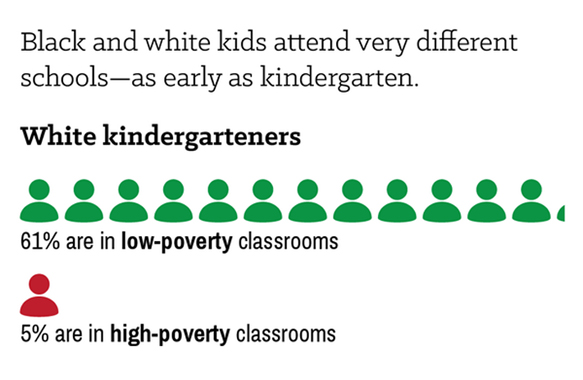By Elaine Weiss and Emma García | Originally Published at Economic Policy Institute. June 25, 2014
Growing up black or Hispanic in the United States today means high odds of living in concentrated poverty: in neighborhoods in which at least 40 percent of the residents are poor. This connection between minority status and being surrounded by poor peers is true, as well, in the school setting. Not only do most U.S. kids begin school in classrooms that are heavily segregated—white kids in heavily white classrooms, minority kids in heavily black and Hispanic classrooms—black and Hispanic kindergartners are also disproportionately surrounded by poor peers.
Nationwide, 25 percent of kindergartners are from low-income households. If schools reflected this makeup regardless of the racial composition of classrooms, students would be in classes in which about one in four of their peers were low-income. Yet most white students (three in five) are in classrooms in which just a little more than one in ten of their classmates are poor. Only 11 percent of Hispanic and only 7 percent of black students enter school into such low-poverty classrooms.
By contrast, most Hispanic and black students are in classrooms in which at least two thirds of their peers are also minorities, and virtually half are poor: 56.5 percent of black students and 55.2 percent of Hispanic students enter kindergartens in which 48.9 percent of their peers are poor. Only a fraction of white students (5 percent) attend these schools. To learn more about the racial and socioeconomic status (SES) composition of our nation’s kindergarten classes, see the full report, Segregation and Peers’ Characteristics in the 2010-2011 Kindergarten Class: 60 Years After Brown Versus Board.

See related work on Education | Inequality and Poverty
See more work by Elaine Weiss and Emma García












Leave A Comment